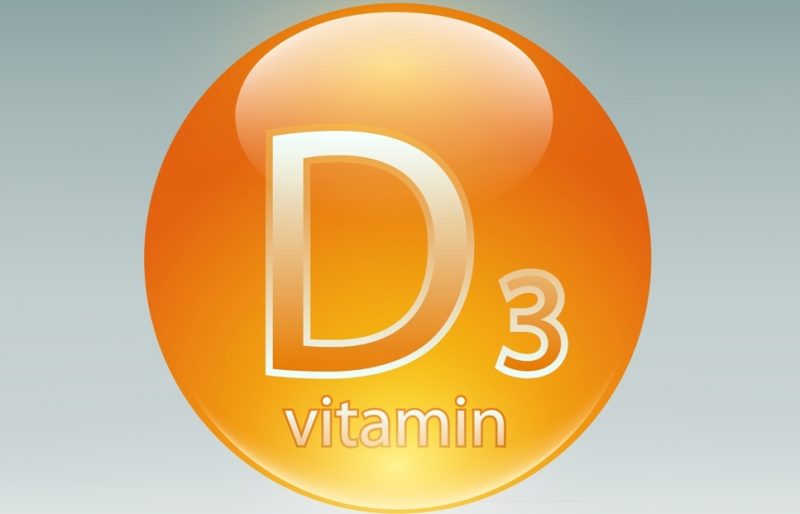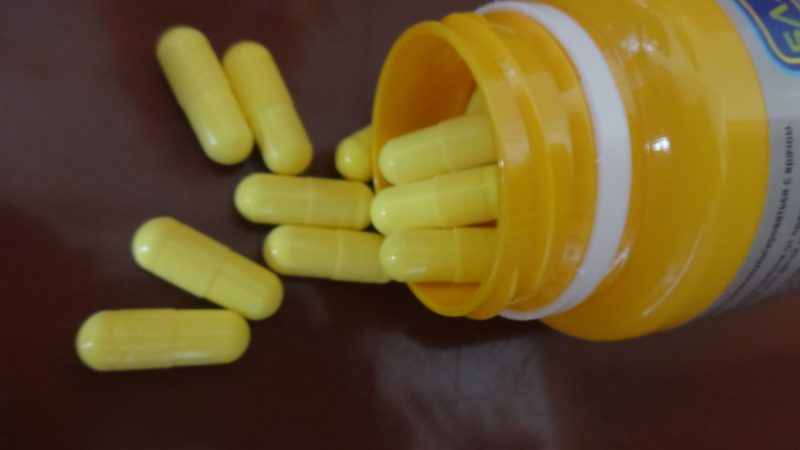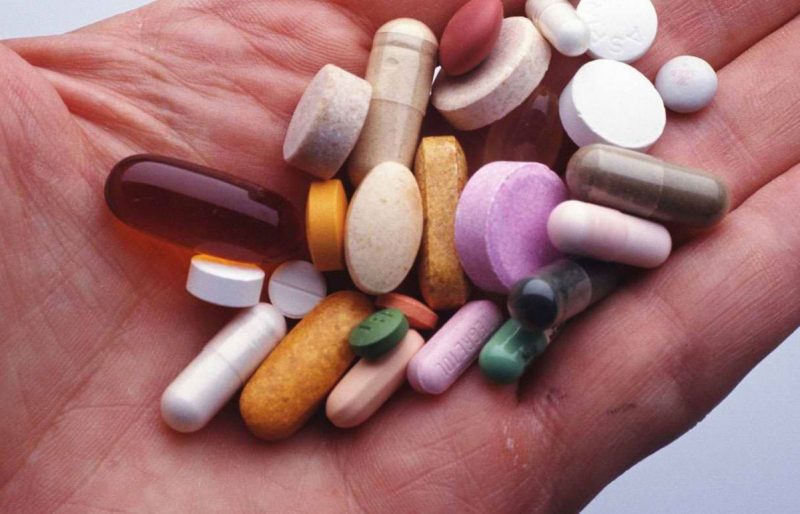Studying what women need vitamin D3 for, scientists agreed that it is vital for most body systems. From seasonal viral diseases to oncology, premature aging, difficult menopause - all this is directly or indirectly considered the consequences of a lack of D3.
Material Content:
- 1 Why do women need vitamin D3?
- 2 Daily requirement for different ages
- 3 Signs of Vitamin D3 Deficiency and Excess
- 4 What products contain
- 5 Vitamin D3 Preparations
- 6 How to take dietary supplements
- 7 What is the vitamin useful for pregnant women?
- 8 Interaction with other substances
- 9 Contraindications and side effects
Why do women need vitamin D3?
Without vitamins of group D (calciferols), uninterrupted high-quality work of the body is impossible. To make up for the lack of vitamin D, take the form D2, D3.
Recent studies have revealed some of the negative aspects of D2:
- After the decay in the body D2 from this vitamin, toxic substances remain that accumulate. After the collapse of D3 such harmful "waste" does not happen.
- D3 is absorbed faster, and its effect on the body is more powerful than the effect of D2.
- Taking ergocalciferol (D2), it is important to strictly adhere to the prescribed dose, because a slight increase in it is fraught with an overdose (in contrast to taking D3).
Due to the presence of these shortcomings in D2, modern experts prescribe a more useful form - D3.
The latter affects the following:
- Cells. The daily dose of vitamin D3 (or cholecalciferol) protects the tissues from the appearance of tumors, because the cells do not mutate, they are quickly updated qualitatively and grow. Vitamin is especially important for the prevention of cancer of the prostate, intestines, and mammary glands. D3 takes care of the skin with psoriasis: it is covered with a vitamin preparation.
- Immunity. The synthesis of protective cells is a bone marrow task that it performs more actively with the support of D3.
- Nervous system. Thanks to this vitamin, the absorption of calcium, the “conductor” for nerve impulses, is being established. For nerve membranes, vitamin is important in itself: it supports their recovery. These properties of D3 are taken into account in order to protect against multiple sclerosis or successfully resist it.
- Endocrine system. Insulin synthesis and “healthy” sugar level depend on D3. Vitamin intake reduces inflammation, increasing the effectiveness of insulin.
- Bones. D3 provides the absorption of bone minerals minerals - magnesium, phosphorus, calcium. Bone formation is impossible without these substances: they become fragile. The consequences of a deficiency of this vitamin include rickets, frequent fractures, osteoporosis. Bone fragility in the elderly is associated with D3 deficiency.
- Menstrual cycle. A stable cycle of menstruation is possible only with a sufficient level of D3.
- The course of certain diseases and the risks of their development. Such diseases include asthma, rheumatoid arthritis, and obesity.
- The work of the heart. Deficiency of this vitamin increases the risk of developing heart disease. D3 stabilizes blood pressure, cholesterol.
- Mood. Testosterone, estrogen are produced worse with a low level of vitamin D. Anxiety appears, mood swings, and insomnia. Hormonal disruptions exacerbate the negative symptoms of PMS.
- Concentration, concentration, quality of memory.
On a note! The assimilation and preservation of knowledge depends on D3, therefore, all students and workers in the intellectual fields are recommended to take the drug during stressful periods and in the season of vitamin deficiency (in winter, early spring).
Daily requirement for different ages
An excess of this nutrient can be dangerous, as well as a deficiency.
Its daily rate is determined for different categories of people. For dosage D3, two units of measure are used: micrograms and Unit of Action (or International Unit). In abbreviated form, respectively: mcg, ED (or IU). In 1 mcg - 40 PIECES of vitamin D3. Some doctors suggest that for the adult population, the D3 rate needs to be increased several times (up to 5000 IU). Now the norm of vitamin D3 is this:
| Population category | Age groups | The norm of vitamin per day |
|---|---|---|
| Children (both sexes) | Yearlings | 400 IU |
| 1 - 18 years old | 600 IU | |
| Adults (both sexes) | 18 - 50 | 600 IU |
| 50 + | 800 IU | |
| Pregnant and lactating women | 600 - 2000 IU |
In non-sunny seasons, in the northern regions (all year), it is better to choose not the lower extreme figure of the daily norm, but the average or even the highest. Those who almost never go outside (or work at night) in the daytime should also choose average or high indicators of the daily norm D3. Other important factors for increasing the daily intake of D3 (within normal limits): living in areas with poor ecology, bed rest, exhausting diets, vegetarianism, pregnancy, postpartum recovery, breastfeeding.
To accurately determine the vitamin in your body, they donate venous blood. The collection of this analysis takes place in the morning (food is not consumed before).
Signs of Vitamin D3 Deficiency and Excess
Low D3 (cholecalciferol) is accompanied by the following symptoms:
- drowsiness, weakness, fatigue;
- general deterioration in well-being;
- insomnia;
- prolonged lack of appetite;
- visual impairment;
- osteoporosis;
- high pressure;
- depression;
- asthma;
- burning in the mouth and throat;
- fragility of bones and their long recovery due to osteomalacia (weakening of bone tissue due to leaching of calcium).
Often these signals are absent, therefore it is worth doing analyzes.
Lack of D3 for a long time can lead to such complications:
- heart problems
- psoriasis;
- hypertension;
- depression;
- arthritis;
- oncology;
- diabetes;
- multiple sclerosis;
- osteoporosis;
- fibromyalgia.
Lack of D3 especially affects the body of infants.Low levels of the substance are determined by doctors and prescribe the necessary supplements. This type of supplement is considered one of the most recommended for young children. Among the complications of vitamin deficiency in infants, rickets, kyphosis, and poor eyesight are distinguished.
The body is not able to restrain the urge to urinate from an excess of D3. Excess vitamin A is the cause of toxic calcium stores. Large volumes of the latter inhibit the work of body systems (bone, cardiovascular).
Overdose of vitamin is accompanied by such manifestations:
- vomiting
- weakness throughout the body;
- thirst;
- Aching joints and muscles;
- painful long migraines;
- sleep disorder.
Many are familiar with the state of weakness and nausea after sunbathing for several hours in the sun. These are also the consequences of an overdose of D3.
What products contain
Vitamin D3 preparations are only an addition to the natural use of this substance. More than 95% of the required vitamin is synthesized by the skin when UV rays get on it. Therefore, D3 is called "solar." In cloudy weather or in the shade, the skin produces about 60% of the daily value of this substance. If you cover the skin with sunscreen products - the synthesis of D3 will be reduced by 90 - 99%. The use of sunscreen products is recommended by doctors to prevent skin oncology. It is worth it once a day (in the morning - before 11; after lunch - after 16) to go out in the sun for 20 minutes. At this time, the rays are less aggressive on the skin, so they will not harm.
The vitamin is concentrated in food of animal origin:
- milk;
- fatty dairy products (cream, milk, cottage cheese);
- meat of sea fish (sardine, salmon, mackerel, tuna, herring, halibut);
- fish fat;
- chicken eggs;
- beef, pork (and other fatty meat);
- butter;
- offal (caviar, beef liver, halibut liver, cod liver);
- poultry meat (especially ducks).
Among plant foods, the richest D3 are:
- forest mushrooms (especially chanterelles);
- oatmeal;
- yeast;
- raisins;
- potatoes;
- parsley;
- nettle;
- celery;
- seaweed;
- nuts
- garlic;
- cabbage.
For assimilation by the body, D3 is soluble in fat, therefore, all non-greasy products from the above are recommended to be consumed with vegetable, animal fats or with products in which it is contained (seeds, any kind of nuts, milk).
Vitamin D3 Preparations
All D3 preparations are based on oil or water. Forms of release - capsules, drops, tablets, solutions for injection. The dosage of vitamin D3 is different.
Vigantol is one of the most famous oil-based products in the group, created in Germany. Its approximate cost is 180 rubles. Positive features of the drug: no alcohol, does not require heating before use, rarely provokes allergies. Negative features of the drug: poorly absorbed by people with insufficient bile in the intestine, a higher risk of overdose than most drugs of this type.
Aquadetrim is one of the most famous water-based products made in Poland. The cost of the drug is 150 - 350 rubles. D3 cannot be dissolved in water, therefore, in such preparations there is always alcohol and various chemical additives. The advantages of the drug include the following: low risk of overdose, suitable for violations of bile secretion, is well absorbed. Cons of the drug: it requires heating, there is alcohol in the composition, it often provokes allergies, the taste is not peculiar to everyone.
Solgar - oil-based drops that are classified as "premium". The drug was created in the United States, meets international standards, 100% consists of natural substances. Standard cost - 1050 rubles. Consumers of the drug did not find any minuses in him. Among its advantages: lack of sugar, dyes, chemical additives, GMOs. The drug is classified as hypoallergenic.
Now Foods is an oil-based soft capsule supplement manufactured in America. The cost of the supplement is about 500 rubles.Hazardous properties of the drug were not found by buyers, but you need to measure the correct dose. Among the important features is the fully organic composition.
Gummi King - soft baby marmalades that are allowed from 2 years. They are produced in the USA. Cost - 700 rubles. Marmalades have a very pleasant, not too sweet taste based on concentrated juices. Positive characteristics of the drug: pleasant natural taste, organic composition, hypoallergenicity. Cons of the drug, consumers do not note.
How to take dietary supplements
The effectiveness of taking nutrients depends not only on the right dosages and regular use.
The conditions under which a biologically active additive is absorbed by the body as much as possible should be taken into account:
- not all vitamins are compatible, so you should not take them all together (except for ready-made developed complexes);
- during the course of D3 it is useful to eat food with vegetable or animal fat;
- the amount of animal food should not be large so as not to contaminate the intestinal microflora in which vitamin absorption occurs;
- stress destroys the intestinal microflora (as well as prolonged treatment with antibiotics), in this case, the body is supported by a course of probiotics;
- most drugs become ineffective if washed down with milk, but the effectiveness of D3 with milk only increases;
- to drink the drug, pure water is ideal (boiled chilled or "fresh");
- you need to drink a lot of fluids during administration;
- tea, coffee weaken the positive effect of the substance (4 hours should elapse between the use of vitamins and drinks);
- not all products can be combined with this vitamin, so the mode of its use should not coincide with the diet;
- some preparations must be brought to the temperature indicated on the package;
- noticeable result after the end of the course (a month or more);
- Water-based D3 is recommended for babies who have poor bile production (this failure occurs in premature babies);
- it is worth considering the increase in the number of allergies in babies to aqueous solutions of this substance;
- in case of urgent need D3 recommended its most natural form with a high concentration - fish oil (in 1 tbsp. l. - 600–1200 IU).
Important! Important substances entering the body are destroyed by parasites that are present in the body of 90% of people; therefore, such "inhabitants" should be periodically "cleaned."
What is the vitamin useful for pregnant women?
Pregnant women need to take vitamin D3 (colecalciferol) if it is deficient, if it is not contraindicated. A useful supplement throughout pregnancy (especially at week 30). An emerging new person needs the prevention of rickets, which provides vitamin. The use of a substance within the framework of the norm is the care of the nervous, skeletal systems, the thyroid and genital glands of a woman, as well as the fetus. Both on sunny and snowy days, one should go out under the rays of the sun in order to receive a significant part of the daily norm in a natural way. This will help to remove or "soften" the pain of the joints, spine, weaken or completely relieve seizures. Saturation of bones with calcium and other minerals, strengthening the teeth of expectant mothers depends on vitamin D. Established blood coagulation is important for pregnant women, which is facilitated by D3.
Interaction with other substances
When taking certain drugs, D3 is prescribed. Taking medications depletes the body, complicates the absorption of nutrients. These drugs include barbiturates, colestipol, colestyramine.
Reception D3 can be combined with the intake of vitamins of groups A, B, phosphorus and calcium. During the course of D3 ascorbic acid is useful. Up to 2 years old, babies are given this vitamin only with calcium.
With some drugs, vitamin D supplementation cannot be combined.
These include:
- diuretics - this leads to an overdose of calcium;
- glycosides - this depresses the work of the heart;
- antacids - magnesium and aluminum in them becomes toxic in combination with D3;
- remedies for epilepsy - with them, the vitamin brings less benefit;
- glucocorticosteroids - negatively affect the effectiveness of the vitamin;
- tetracycline drugs - also impair the absorption of vitamin preparations.
You should inform your doctor about treatment with drugs so that he determines their compatibility with D3. The doctor will develop a program for the intake of nutrients so that everyone displays their properties as much as possible and without negative consequences.
Contraindications and side effects
In some conditions of the body, vitamin intake is not permissible. These include an overdose of calcium, hypervitaminosis, urolithiasis, renal osteodystrophy, hypersensitivity.
Let's take this substance under the supervision of a doctor if the patient has one of the following diseases (conditions):
- phosphate nephrourolithiasis;
- pregnancy, lactation;
- tuberculosis ("active");
- granulomatosis;
- gastrointestinal problems;
- disorders associated with the work of the liver, kidneys;
- dysfunctions of the cardiovascular system;
- hyperphosphatemia;
- thyroid dysfunction.
One of the side effects is vitamin intoxication due to the use of too much of the drug for 2 or more weeks (from 20 thousand IU per day for adults, from 2 thousand IU for children). Complications of intoxication: leaching of minerals from bones, their fragility, accumulation of calcium in blood vessels, heart, intestines, kidneys, inhibition of their work. For children, this is fraught with impaired development of the skeletal system, stunted growth.
The body can respond to D3 drugs with an allergy. With rashes and other negative reactions, you should abandon the use of the substance, consult a doctor.
Other side effects of the vitamin include:
- migraine;
- constipation;
- high pressure;
- lack of appetite;
- myalgia.
The benefits of vitamin D3 are undeniable. If you do not make up for its shortage of products (with its high content) and drugs, sooner or later it will lead to many diseases. Do not forget about the sun - the most generous source of D3.





















